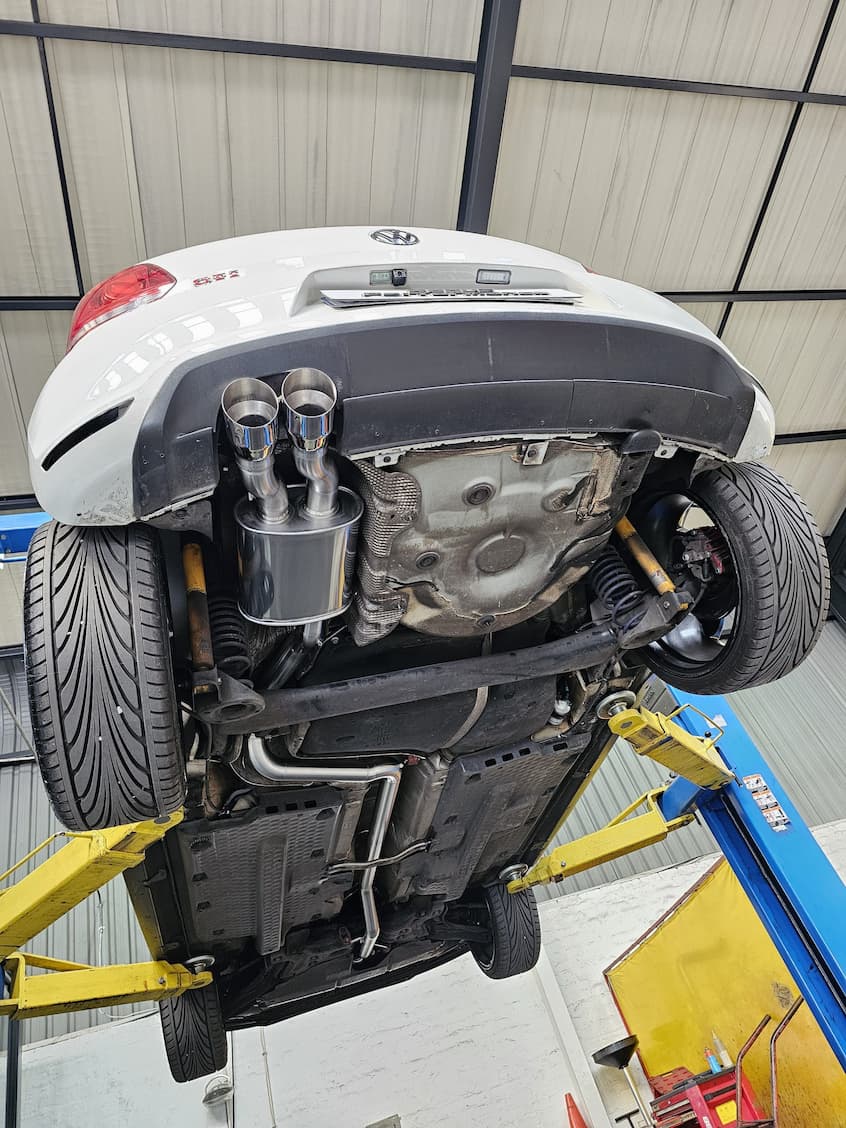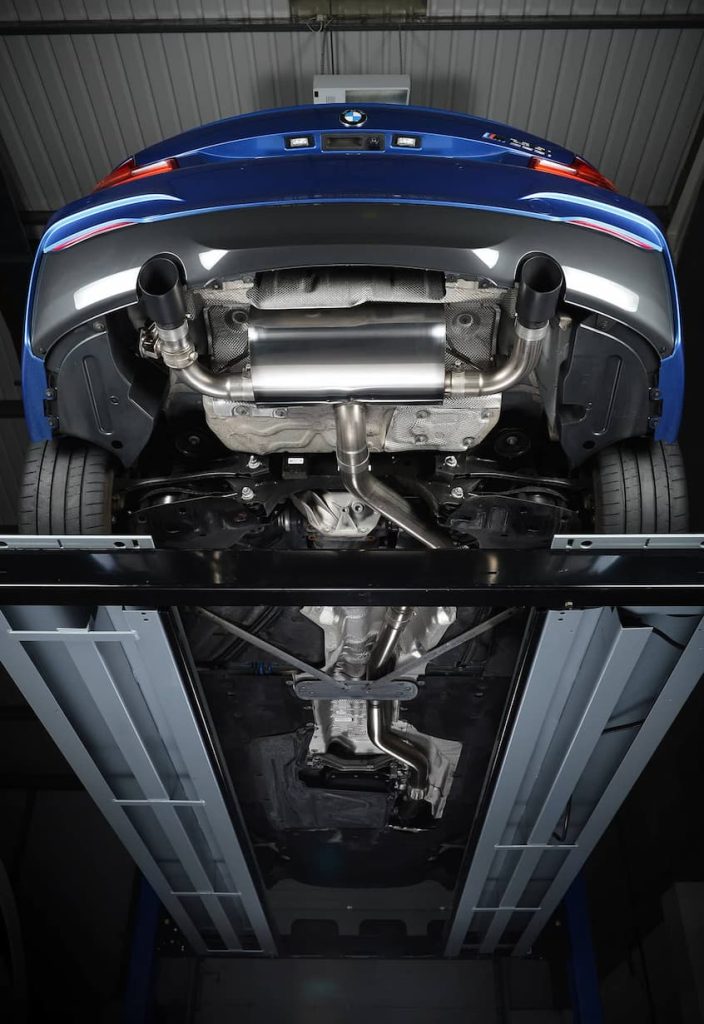
What to Know Before Buying a Performance Exhaust
Car upgrades can get costly and outright confusing (or counterproductive) if not done right. For budding gearheads, the first place to start if power gains are the main priority is optimised airflow in and out of the car. This means matching air intakes and exhausts that not only add a performance boost by maximising engine efficiency, but also bring a few surprises well worth the outlay.
Exhaust System Fundamentals

Engines produce power by burning a mixture of air and fuel. Spent gases exit the combustion chamber through the outlet valves and the exhaust manifold. The basic purpose of the exhaust system is to divert harmful gases like carbon monoxide and nitrogen oxides out of the engine. These are filtered through parts like catalytic converters and diesel particle filters to keep emissions in check.
Where factory systems fail are airflow restrictions that starve the engine of intake air, mainly due to narrow piping, multiple bends and inferior materials like crush-bent mild steel. Cost-cutting measures are essential to keep end vehicle prices sane, but this comes at the expense of outright performance and longevity.
Anyone needing more power from a stock engine will be more than happy with a durable performance exhaust for sale. The upgraded and wider piping eases airflow out of the engine, leading to improved combustion efficiency and more horsepower and torque. And with superior materials and advanced production methods, all system parts last longer regardless of how or where you drive.
Why Have a Performance Exhaust?
Aftermarket and performance exhausts are engineered to get the most out of the engine. This is why exhausts, along with the air intake systems, are often the first modifications to stock engines. By improving airflow, the parts help with exhaust velocity (the speed gases exit the car), exhaust scavenging (the vacuum effect in wide-diameter header tubes to draw spent gases out the valves and manifold), and to reduce lingering gases in the piping leading to increased and performance-killing backpressure. In short, revised piping designs get more exhaust air out faster, letting the engine do its main task – producing power.
Consider installing an aftermarket system from established automotive parts brands if the following benefits tick your wish list:
- Increased power and torque: With fewer airflow restrictions and improved designs, aftermarket exhausts boost horsepower and available torque. This is down to boosted engine efficiency. Full systems can increase power by a rated 10% of the overall engine output. Moreover, there’s more torque, especially lower down, leading to a more responsive engine.
- Faster acceleration and easier overtaking: Power gains result in engines that get to speed sooner, with benefits also evident in in-gear acceleration, meaning faster gear changes. Overtaking is easier too, with more torque to push the car. Related are the higher top speeds and improved towing capacity for SUVs and utes.
- Louder sound: Straighter pipes increase exhaust velocity – the basic ingredient for a louder, deeper exhaust sound. This can also be modified to personal tastes when combining different muffler and resonator configurations for a more mellow or even louder, throatier exhaust note. Additionally, proprietary tech like valving, with butterfly valves in the tailpipes and tips, allows owners to modify the sound and match exhaust profiles with engine speeds.
- Durability and superior builds: Performance systems use tougher materials, starting with high-grade mandrel-bent stainless steel (or in costlier setups, exotics like titanium, Inconel and carbon fibre) to improve heat and impact resistance – a major letdown in factory units. Piping not only lasts longer in spirited driving with higher engine and gas temperatures and pressures, but also performs better when hitting potholes and speed bumps. An overlooked benefit is the superior rust resistance – especially in vehicles used off-road or in wet climates.
- Weight savings: Despite going wider, aftermarket piping sheds weight. As an illustration, a full header or turbo-back exhaust in stainless steel loses over 20 kilos over factory units in mild steel. Adding upmarket materials in areas like the tips or mid-pipes slims the car even more.
- Customisation: When looking for a performance exhaust for sale, customising your car is the top priority. Modular, bolt-on designs mean car owners can mix and match parts to meet performance requirements, sound profiles or allotted budgets. Popular additions include performance headers and downpipes to improve scavenging, high-flow catalytic converters, wider mid-pipes and straight-pipe mufflers for increased exhaust velocity, and high-flow mufflers for a deeper sound.
Main Buying Considerations
Manufacturers make purchases easy by assembling different parts into “complete” systems, each with its own set of benefits. Simpler and less costly axle-back systems have new parts from the rear axle to the tips, with new mufflers the main mod.
These systems are more about the louder sound than real-world power gains. They’re also chosen for the visual impact of the tips, available in a range of shapes, sizes and materials. Cat-back systems are the next level up, with wider mid-pipes to improve airflow and are the middle ground in terms of balancing power and price.
For the biggest power gains, choose a header or turbo-back system, with completely new piping and parts from manifold to tips. These are also offered in specific layouts, including H-pipes that improve scavenging and low-end power or X-pipes for a cleaner sound and more high-rev push. While the priciest option, full systems pair well with performance vehicles and cars that see bigger modifications.
For compatibility, consider piping diameters (ranging from 2.5 to 3.5 inches for most vehicles) and supplied mounting hardware and brackets for simple installation. Lastly, choose a reputed brand with defined product lines, quality builds and clear warranty periods if anything should go wrong.

